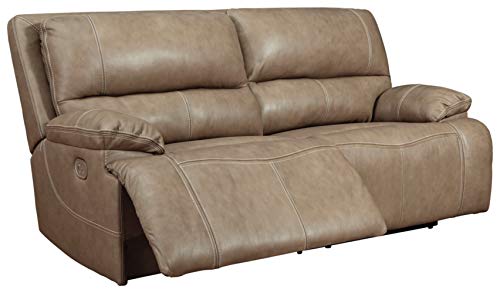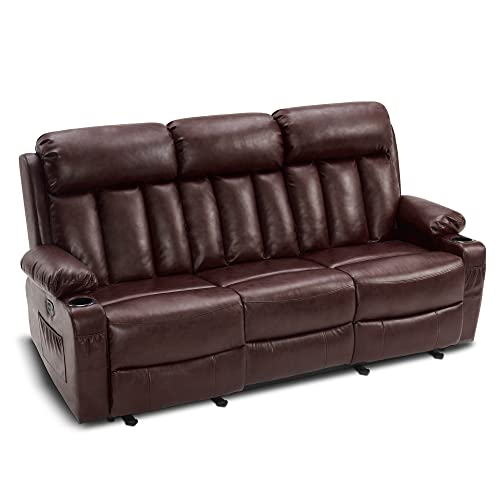What's The Current Job Market For Genuine Leather Sofa Professionals L…
페이지 정보

본문
 How to Spot a Genuine Leather Sofa
How to Spot a Genuine Leather Sofa This sofa is a wonderful option for any room. Its leather upholstery is soft and silky. People love its simple design and high-quality, genuine leather upholstery.
This sofa is a wonderful option for any room. Its leather upholstery is soft and silky. People love its simple design and high-quality, genuine leather upholstery.However, distinguishing real leather from fake leather can be a challenge for the untrained eye. Here are six helpful tips to help you tell the difference: 1. Rough edges.
1. Labels are essential
Real leather is hard to duplicate. It has a unique appearance and feel. It's also durable and easy to clean. It does not absorb body oils, which makes it a great choice for families with allergies. However there are many different leather sofas leather that are created equally. Some retailers are even known for passing off PVC as genuine leather.
To avoid being ripped off, it's important to know the various types of leather. This includes determining top-grain and full grain leather, as well as assessing the quality of the upholstery. Do not hesitate to ask your favorite retailers for this information.
The first step to identify a genuine leather sofa is to check the label. It should clearly identify the kind of leather the sofa is upholstered with, along with any other materials like cotton or fabric. In addition, reputable sellers will have clear policies regarding returning or exchanging items in the event you aren't happy with your purchase.
If the sofa doesn't come with a label however, you can still figure out the authenticity of the sofa by examining the fabric backing or by opening a cushion casing to check for synthetic materials. You can also examine the texture of the leather to determine if there are any bumps or blemishes. These are indicators that the leather is fake or is bonded.
You can also test the quality of the sofa by touching its surface. Genuine small leather corner sofa has a smooth, soft texture. Faux leather or bonded leather is more coarse and feels like suede. You should also be able to feel the difference between the wrinkles, bumps and printed patterns of faux leather and genuine leather.
While a genuine leather sofa will cost more than its imitation counterpart It's a wise investment as it will last longer and will often end up as family heirlooms through the years. You can reduce the damage caused by the sun as well as ozone, heat and humidity by putting your leather sofa in an airy, dark space far from fireplaces, heaters and air conditioners. In addition, you can apply leather protection creams to keep your sofa soft and strong.
2. Check out the back
If the label doesn't tell you what kind of leather a sofa is, it's important to get up close and personal with it. The smell, the feel, and the back are all clear indicators.
Genuine leather may not feel smooth when you contact it. This is because animal hides have diversely shaped pores that allow them to breathe. However, a american leather sofa product that feels completely smooth suggests that it may be fake leather.
Look for bumps or uneven surfaces. The preparation of genuine leather includes buffing, which removes some of the rough outer skin. But if the material used to cover your sofa is top-grain leather it's likely to be bumpy.
You can also test the leather by running your fingers over it and pressing into it. If the leather is genuine, it will stretch and wrinkle like human skin. This means it's capable of breathing, which means that the leather doesn't get dry and cracked over time.
Faux leather is uniform in pattern due to the fact that it is printed, while genuine leather is prone to imperfections that add to the beauty and durability of the leather. This includes scratches, creases and scars. A quality leather sofa will be soft, a little stiff when new, but it should not crack or dry out in time if it's regularly maintained with a specific leather protection cream.
Some furniture makers mix real leather with synthetic leather in order to save money. The 'contact' areas, such as seats, armrests, and backs, are made of real leather modular sofa, while the non-contact areas, such as outside and base arms, are upholstered with a cheaper polyurethane- or leather-like-synthetic fabric. This is a common practice, and even if the couch has a genuine leather label You should examine carefully to determine what the backing is made of, since this will be a quick indicator that it's not authentic leather.
Labels and pricing can help you identify a genuine leather sofa However, it is essential to inspect it up close. Feel it, smell it and check its back for a backing made of polyurethane which is an obvious indication that it's not genuine leather.
3. Look at the seat
The seat of a genuine leather sofa is a further indicator of its quality. While the majority of faux leather couches utilize a mixture of fabrics for the upholstery Genuine leather has a distinctive texture that feels smooth to the touch and is not totally uniform in color or shade. Look for bumps under the surface and a rich natural, fresh scent. These features distinguish genuine leather from fakes and low-grade leather.
Another indicator is if the leather is stitched together in a long, continuous piece. Although this isn't uncommon with faux leather, if you notice this with genuine top-grain leather, it's most likely to be a sign that the sofa is not of good quality and should be avoided.
The price and the label might provide an idea however the only reliable way to know is to feel the furniture. Genuine leather shouldn't be perfect and feel uneven. It may also have large wrinkles in the surface and rough edges. Genuine leather feels supple and different than synthetic materials. The temperature of the furniture could be a sign of whether it is made of genuine materials.
A leather sofa is an interior design mainstay for a reason: It's stylish, durable and long-lasting. In addition, it's easy to wipe clean and resists liquid spills making it a good choice for families with pets or children. The best thing about genuine leather, however it's that it's a classic design that will never go out of style and is still available at a range of price points.
For a classic leather couch that can last for a long time, look into the Pottery Barn Turner. This two-seater may be expensive however it's made of top-quality leather that can last for a lifetime. This is a great option for those with a limited space, since it comes in with three sizes and fits in almost any room.
If you're looking for something little more modern, consider this All Modern Geo Genuine Leather Sofa. This mid-century-modern-inspired couch features an elegant, angular style with cylindrical pillows and an elegant frame. The sofa is made from plywood, composite, and plastic. The leather is only used for the seating area. It is a step up from Ikea’s faux-leather sofa that won CHOICE’s "Shonky Award" in 2015.
4. Look at the smell
Real leather has an unmistakable scent. It's a natural, organic scent that can't be replicated. If the sofa that you're looking to purchase has a strong, artificial scent, it is not genuine. Most often, this is due to the chemicals used to make the leather, which remain in the furniture after it's been constructed and even after you bring it home.
A good way to test the quality of a leather sofa is to gently rub your fingers along the surface. Genuine leather will have bumps and lumps just like the human skin. If it feels soft and cold, it is most likely fake or made of bonded leather.
Alternatively, you can take one of the cushions and inspect the back. Faux and bonded hides will feature a polyurethane backing to help support the upholstery. Genuine leather has a back that is untreated and is similar to coarse suede. If the sofa has a woven backing it is not real leather.
Peter suggests that if you are trying to decide whether the sofa is genuine the best method is to put it against your body and then gently run your fingers along the surface. The scratches on the leather will dull your fingernails, and the surface should be stretched and wrinkled slightly. It will also feel warm to the feel.
The sofa's back and examining the upholstery will let you know if the sofa is genuine. Genuine leather is a continuous piece of leather, not a plastic-coated faux or bonded leather.
When deciding on the grade of your leather sofa, consider how much use it will get and how long you'd like it to last. The more you utilize your couch the more care it will require. Peter suggests a regular, gentle cleaning with a leather conditioner. This will help keep the leather's softness and stop it from drying out and becoming hard.
- 이전글Идеи подарков. 24.10.29
- 다음글Why We Why We Walking Desk Pad (And You Should Too!) 24.10.29
댓글목록
등록된 댓글이 없습니다.

